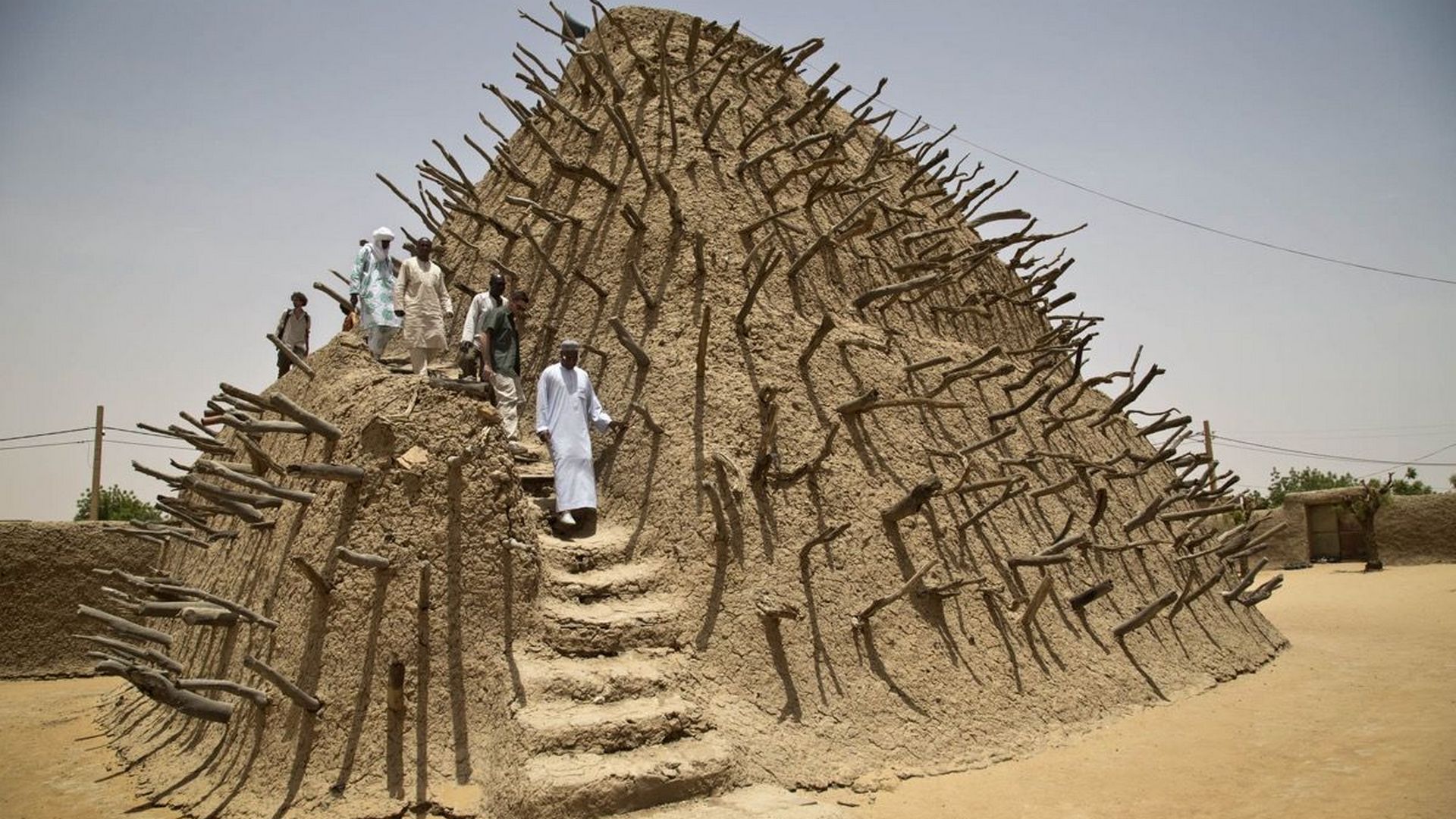Description
Property Name: Tomb of Askia
Inventory No: 223-2706-1
Date of infill of the inventory form: 2007-11-06
Country (State party): Mali
Province: Gao
Town:
Geographic coordinates: 16° 17′ 23.27″ N
0° 2′ 40.41″ E
Historic Period: 15th century, 2nd half
Year of Construction: 1495
Style: West African Sahel
Original Use: Tomb/Mausoleum
Current Use: Tomb/Mausoleum
Architect: Unknown
Significance
It is a fine example of the monumental mud building traditions of the West African Sahel. The complex was built when Gao became the capital of the Songhai Empire and after Askia Mohamed had returned from Mecca and made Islam the official religion of the Empire.
Selection Criteria
ii. to exhibit an important interchange of human values, over a span of time or within a cultural area of the world, on developments in architecture or technology, monumental arts, town-planning or landscape design
iii. to bear a unique or at least exceptional testimony to a cultural tradition or to a civilization which is living or which has disappeared
iv. to be an outstanding example of a type of building, architectural or technological ensemble or landscape which illustrates (a) significant stage(s) in human history
State of Preservation
Since the construction of the tomb, it has undergone re-plastering on regular basis. Re-plastering has altered the shape of the building but also added its singularity. Throughout the recent years some new materials started to be used in some parts of the buildings, like cemented steps, metal doors, metal rainwater sprouts. In the Management Plan of the monument, these alterations are planned to be reversed. Addition to these, there is an effort to document the original plants and trees.It is designated as a UNESCO World Heritage Site in 2004. It is the first example of an Islamic architectural style that later spread throughout the region. Relatively recent modifications to the site have included the expansion of the mosque buildings in the 1960s and mid-1970s, and the 1999 construction of a wall around the site. It has also been regularly re-plastered throughout its history, a process essential to the maintenance and repair of mud structures. Electricity was added in the early 2000s, allowing for ceiling fans, lights and a loudspeaker mounted on top. Askia is in regular use as a mosque and a publicly owned cultural center for the city of Gao. The site and a buffer area around it are protected by both national and local laws.
References
Unesco Website: http://whc.unesco.org


